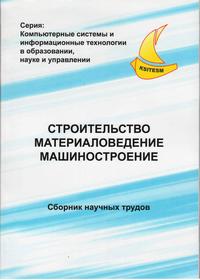Implementation of image analysison surface degradation determination caused by cavitation erosion
Keywords:
cavitation erosion resistance, image analysis, refractory concreteAbstract
The purpose of this study was to investigate different types of measurements by image analysis technique using Image Pro Plus program for determination of surface degradation during cavitation erosion testing. As a refractory concrete, low cement castable was synthesized, cured, and then sintered at 1600 °C. Mass loss and surface degradation of investigated samples were monitored during three hours of exposure to the cavitation erosion testing. Two different approaches using image analysis for surface degradation determination were applied: manual and automatic. The results obtained by those different approaches were similar. Cavitation damage test is usually used for metallic materials. Due to the fact that development and design of modern materials moves in direction of replacement metallic components with composite and ceramic materials, the idea of this study was to investigate possible application of refractory concrete in the extreme conditions of exposure to the cavitation. Usual method for monitoring the material degradation during the cavitation is measuring the mass loss. Novelty of this study is implementation of image analysis for monitoring the level of surface degradation during the cavitation resistance testing. Both methods are non-destructive.References
Ammouche A., Riss J., Breysse D., Marchand J. Image analysis for the automated study of microcracks in concrete. CemConcr Compos, 2001, 23, 267.
Soroushian P., Elzafraney M., Nossoni A. Specimen preparation and image processing and analysis techniques for automated quantification of concrete microcracks and voids. CemConcr Res, 2003, 33, 1949.
Lemaire G., Escadeillas G., Ringot E. Evaluating concrete surfaces using an image analysis process. Constr Build Mater, 2005, 19, 604.
Vlahovic M., Savic M., Martinovic S.,Boljanac T., VolkovHusovic T. Use of image analysis for durability testing of sulfur concrete and Portland cement concrete.Materials and Design, 2012, 34, 346.
TomlinsonW.J., MatthewsS.J. / TomlinsonW.J., MatthewsS.J. // Cavitation erosion of structural ceramics. Ceramics International, 1994, 20, 201.
Litzow U., GahrK.-H.Z., Schneider J. Cavitation erosion of advanced ceramics in water.International Journal of Materials Research ZeitschriftfuerMetallkunde, 2006, 97, 1372.
Niebuhr D. Cavitation erosion behavior of ceramics in aqueous solutions.Wear, 2007, 263, 295.
Martinovic S. Influence of sintering temperature on thermal stability of low cement high-alumina castable.PhD Thesis.University of Belgrade, 2011.
Martinovic S.,Vlahovic M., DojcinovicVolkov-Husovic M. T.,Majstorovic J.Thermomechanical properties and cavitation resistance of a high-alumina low-cement castable.International Journal of Applied Ceramic Technology, 2011, 8, 1115.
Martinovic S., Dojcinovic M.,Majstorovic J., Devecerski A., Matovic B., Volkov Husovic T. Implementation of image analysis on thermal shock and cavitation resistance testing of refractory cocncrete.Journal of European Ceramic Society, 2010, 30, 3303.
Downloads
Issue
Section
License
Редакція Видання категорично засуджує прояви плагіату в статтях та вживає всіх можливих заходів для його недопущення. Плагіат розглядається як форма порушення авторських прав і наукової етики.
При виявлені у статті більш ніж 25% запозиченого тексту без відповідних посилань та використання лапок, стаття кваліфікується як така, що містить плагіат. У цьому випадку стаття більше не розглядається редакцією, а автор отримує перше попередження.
Автори, в статтях яких повторно виявлено плагіат, не зможуть публікуватися в усіх журналах Видавництва ДВНЗ «Придніпровська державна академія будівництва та архітектури».
Автори, які публікуються у цьому журналі, погоджуються з наступними умовами:
- Автори залишають за собою право на авторство своєї роботи та передають журналу право першої публікації цієї роботи на умовах ліцензії Creative Commons Attribution License, котра дозволяє іншим особам вільно розповсюджувати опубліковану роботу з обов'язковим посиланням на авторів оригінальної роботи та першу публікацію роботи у цьому журналі.
- Автори мають право укладати самостійні додаткові угоди щодо неексклюзивного розповсюдження роботи у тому вигляді, в якому вона була опублікована цим журналом (наприклад, розміщувати роботу в електронному сховищі установи або публікувати у складі монографії), за умови збереження посилання на першу публікацію роботи у цьому журналі.
- Політика журналу дозволяє і заохочує розміщення авторами в мережі Інтернет (наприклад, у сховищах установ або на особистих веб-сайтах) рукопису роботи, як до подання цього рукопису до редакції, так і під час його редакційного опрацювання, оскільки це сприяє виникненню продуктивної наукової дискусії та позитивно позначається на оперативності та динаміці цитування опублікованої роботи (див. The Effect of Open Access).

